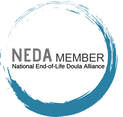|
"Please secure your own oxygen mask before assisting others" is a familiar phrase during the safety briefing on airplanes. This advice extends beyond air travel and is universally useful. Caring for an ailing or elderly loved one can be both rewarding and demanding. If you find yourself in the challenging position of the "sandwich generation," responsible for the care of both children and elderly parents, the stress can escalate. Add in the demands of working, childcare, and household management, it can quickly lead to a state known as caregiver fatigue or burnout.
Caregiver fatigue manifests as physical, mental, and emotional exhaustion resulting from the constant care of another person. Common symptoms include:
The first step is acknowledging that you are struggling. Once you recognize this, take the time to identify the areas where you require assistance. This will let you tap into available local resources. Consider options such as home health care services to aid with day-to-day tasks, utilizing adult day care centers, or arranging for respite care. There are numerous resources ready to provide support. If you need assistance in discovering these resources, consult your healthcare provider or reach out to a local end-of-life doula for guidance. Next, try to allocate at least an hour each day for self-care. This can be as simple as taking a leisurely walk or indulging in an episode of your favorite TV show. Engage in activities that bring you joy and allow you to temporarily shed the role of caregiver. Given that caregiving can be emotionally taxing, seeking the guidance of a therapist can prove indispensable. A therapist can help you navigate your feelings and equip you with additional coping mechanisms for your emotional well-being. Additionally, remember to prioritize your physical health by ensuring you get adequate sleep, maintaining a balanced diet, engaging in regular exercise, and limiting the use of drugs and alcohol. If eating a healthy, nutritious diet proves challenging, consider meal prepping, a convenient solution. Numerous websites offer guidance on meal prepping, and services like Amazon Prime and Misfit Market can deliver groceries to your doorstep. For exercise, even a short 20-minute walk a few times a week can significantly benefit your well-being. It provides an opportunity to step outside, breathe fresh air, and can be enjoyed solo or with a friend for some much-needed social interaction. In summary, You can’t help others if you don't take care of yourself. While caregiving is important, safeguarding your own well-being is critical to provide the best care for your loved ones. Seek help and support when necessary, and remember, it's perfectly okay to prioritize your self-care.
0 Comments
When it comes to end-of-life options for your body, you are presented with several choices for your funeral arrangements. Traditional methods like burial and cremation remain prevalent, yet there are also lesser-known alternatives worth considering. This marks the first entry in the "Understanding Your Funeral Options" series. Today's article will delve into Water Cremation.
Water cremation, recognized by terms such as alkaline hydrolysis or flameless cremation, constitutes a distinctive approach to cremating remains. It employs a blend of alkaline, water, heat, and pressure to effectuate the cremation process. The outcome encompasses ashes akin to those emanating from conventional cremations and a pH-neutral liquid known as effluent. The ashes are returned to loved ones, while the effluent can be safely disposed of alongside other wastewater. Why might one opt for water cremation? A foremost rationale revolves around the environmental advantages it offers compared to traditional flame-based cremation. In the latter, fossil fuel-derived natural gas fuels the combustion. Emissions stemming from this process, including elevated levels of carbon dioxide—a potent greenhouse gas—are released. The emissions also encompass mercury, sourced from individuals' dental fillings, along with carbon monoxide and nitrogen oxides. This pollutes the surroundings and contributes to air contamination. According to the Cremation Association of North America, a conventional cremation consumes roughly as much energy as a 310-mile car journey and produces approximately 534 pounds of carbon dioxide. In contrast, water cremation demands only a fraction of the energy required by its conventional counterpart. Furthermore, it employs electricity instead of natural gas, thereby eliminating greenhouse gas emissions during the cremation. The liquid byproduct of this process can also serve as an environmentally-friendly fertilizer for gardens or local forests. Notably, water cremation excels at breaking down hazardous substances such as chemotherapy drugs and embalming fluids. A drawback of Water Cremation lies in its unavailability within Michigan. While viable for pets, no funeral homes or crematoriums in the state provide Water Cremation services for humans. Opting for Water Cremation entails transporting the body out of state, thereby incurring additional costs, time, and necessitating advanced planning. Although numerous funeral homes and crematoriums express interest in offering Water Cremation, their decision hinges on the level of demand. Therefore, if you have an interest in this method, start a discussion with your local funeral home. |
AuthorRobin Lehman Archives
April 2024
Categories |
 RSS Feed
RSS Feed


